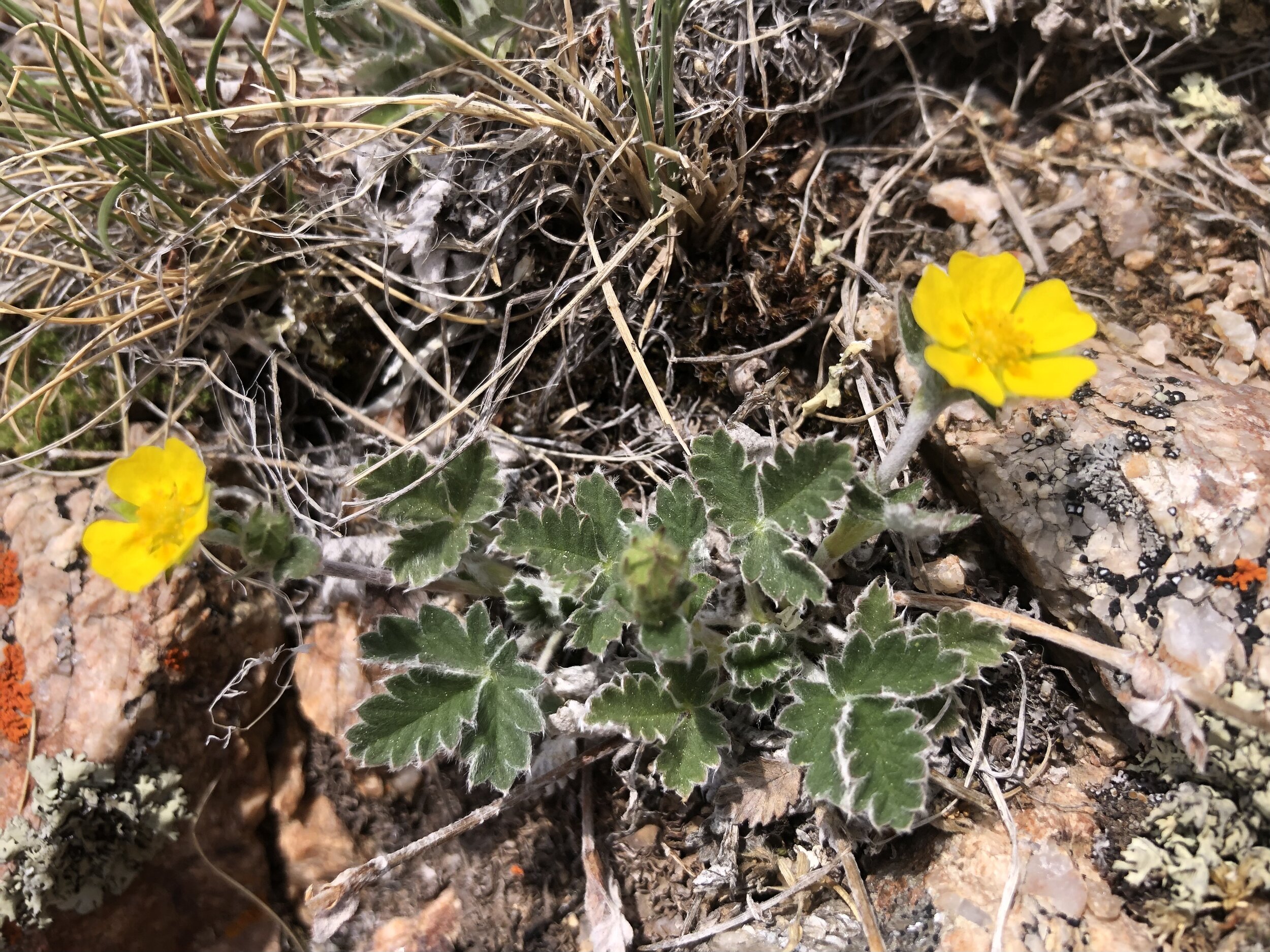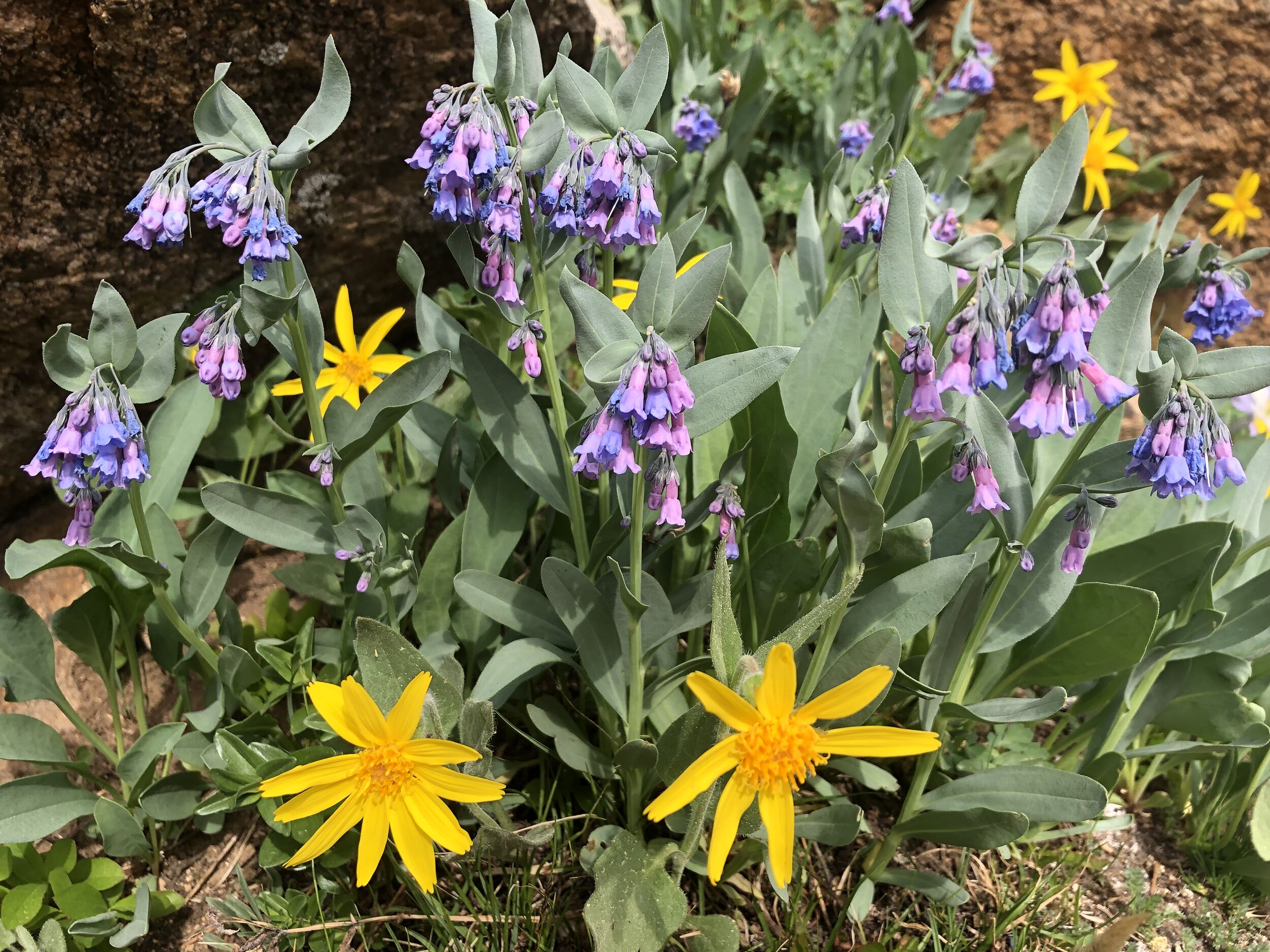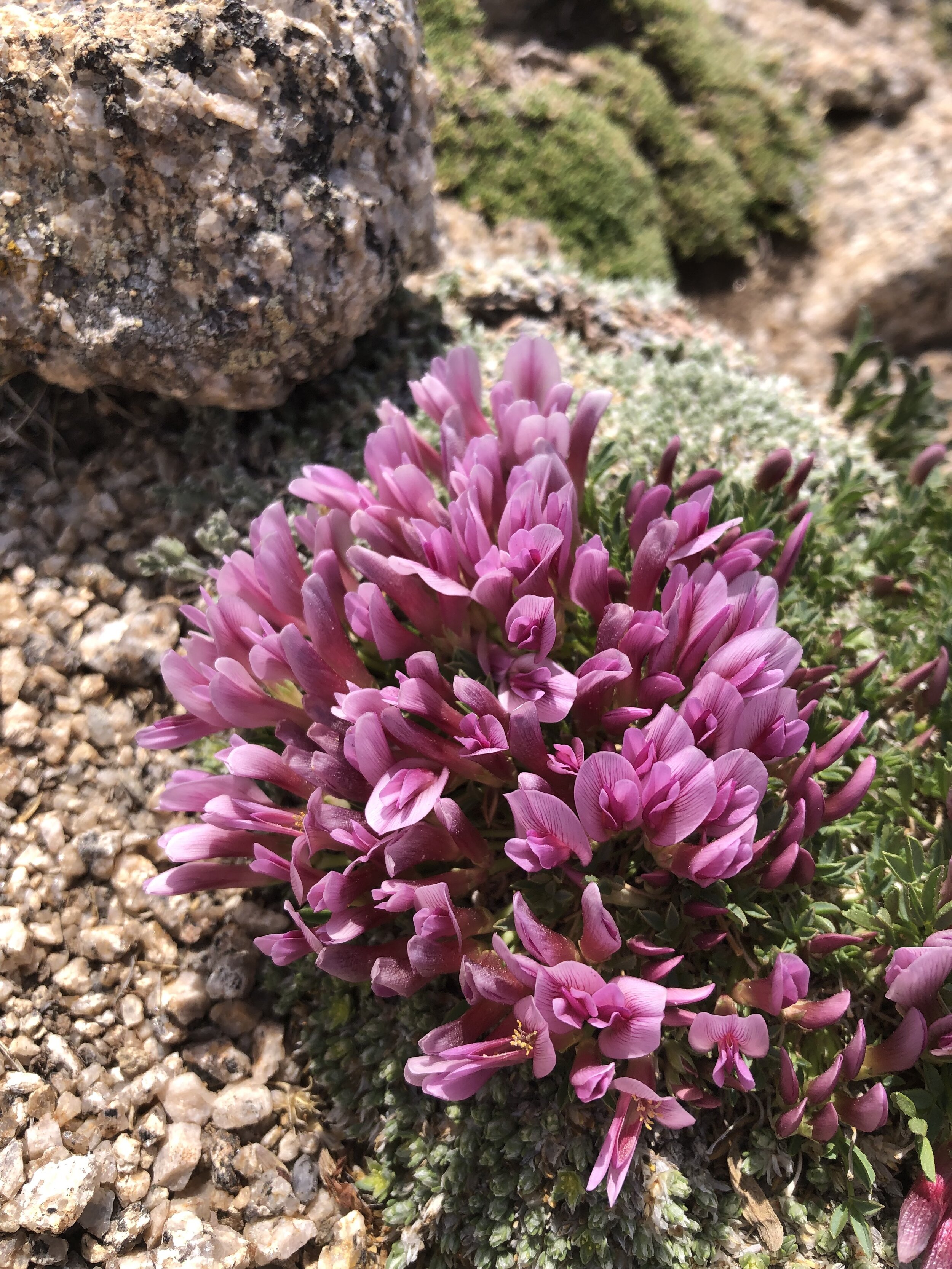Common & scientific name
Narcissus anemone, Anemone narcissiflora
Family
Buttercup, Ranunculaceae
Location
Summit, 12,100’
Fun, weird, helpful, or little known fact
A flower named Narcissus would have LOVED all the attention it gets from scientists! From the authoritative E-Flora: “The taxonomy of this highly variable, widespread species is extremely controversial. The conservative approach taken here most closely approximates S.L. Welsh's (1974) treatment for the Alaskan varieties. E. Hultén's discussion (1941-1950, vol. 4, pp. 735-736) of local races and the variation within this species, however, clearly illustrates the need for a thorough biosystematic investigation. Recognition of about 12 varieties is in light of S. V. Juzepczuk's (1970) work; however, he elevated local races to specific rank in his treatment.” What a complex character, indeed!
What I KNOW is that Anemone narcissiflora can be distinguished from the habitat-sharing, similar-looking Globeflower by its hairy stem, and from Marsh marigold by its divided (rather than simple, smooth-edged) leaves.










































